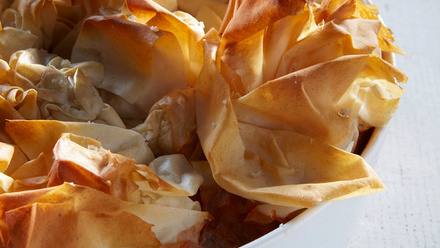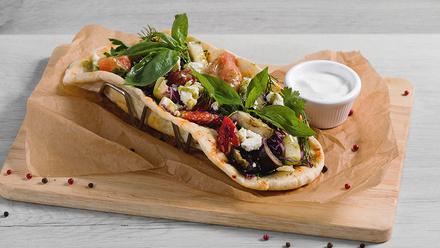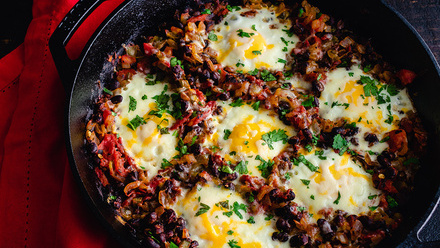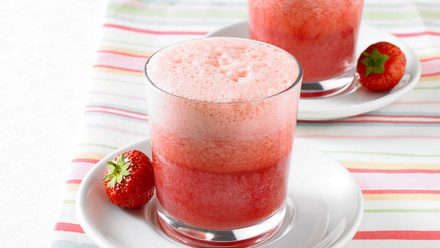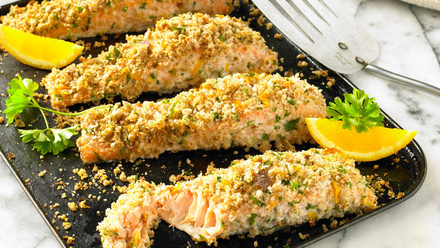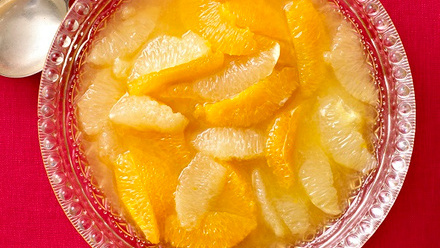Chutneys originate in India and are a great way of preserving fruit and vegetables.
They taste great served with cheese, cold meats and spicy dishes. You can make chutney with almost any fruit or veg and a variety of spices, but be sure to keep the sugar/vinegar/vegetable ratio as stated.
Ingredients
1 marrow OR 4 courgettes (approx. 600g)
8 plums
2 onions
100g sultanas OR raisins
300g granulated sugar
568ml white malt vinegar
1 x 5ml spoon ground allspice
1 x 5ml spoon ground cinnamon
1 x 5ml spoon ground coriander
Pinch chilli flakes (optional)
Equipment
Weighing scales
8 small jam jars with tight-fitting lids
Colander
Chopping board
Sharp knife
Teaspoon
Large saucepan
Wooden spoon
Measuring jug
Measuring spoons
Baking tray
Oven gloves
2 x Pan stand
Greaseproof paper
Scissors
Funnel
Ladle
Clean dry tea towel
Labels
Instructions
- Carefully wash the jam jars in hot soapy water and remove any previous labels that may be stuck on. Set aside to dry.
- Wash the vegetables and fruit.
- Slice the marrow in half and using the teaspoon, scoop out the seeds from the centre and discard. Chop the marrow flesh or courgettes into small chunks (approx. 1cm square). If you are using courgettes there is no need to scoop out the seeds. Transfer to the saucepan.
- Peel and chop the onions into small pieces and add to the marrow. Halve and stone the plums and cut into 1cm chunks, then add to the saucepan.
- Add the sultanas or raisins and sugar to the saucepan. Pour over the vinegar and add the spices to the pan.
- Stir well, to mix up all the ingredients, and slowly bring to the boil, stirring constantly so that the sugar dissolves and does not crystallise.
- Turn down the heat to a gentle simmer and, stirring occasionally, leave to gently bubble for about 1½–2 hours.
- About 20 minutes before the end of cooking; preheat the oven to 220°C/200°C fan or gas mark.
- Place the jam jars (without their lids) on a baking tray and put into the oven to sterilise for 15 minutes. This is important as it will stop mould growing on the chutney.
- The chutney should appear glassy and thick when cooked. Filling the jars.
- Cut small circles of greaseproof paper to fit on top of the chutney in the jars.
- Being very careful, as the jars are hot, place the funnel over the first jar and spoon in enough chutney to reach just below the top. Move the funnel to the next jar and keep going until all the jars are full. Press one of the circles onto the chutney in the jars. Using the dry tea towel, carefully replace the lids and screw tight. This must be done while the jars and chutney are still hot as it creates a seal.
Skills used include:
Washing, weighing, measuring, peeling, chopping, boiling/simmering and baking.
Top Tips
- Chop fruit and vegetables according to how chunky you like your chutney.
- This chutney makes a lovely gift. The jars can be dressed with colourful fabric tops and ribbons.
- If the jars are sterilised properly, your chutney will last for several years. In fact, it is better not to eat it straight away as it improves with age and will be at its most flavourful 2–3 months after making.
- If the mixture starts to stick to the bottom of the pan, do not scrape it off or you will bring up the burnt bits and the whole chutney will taste burnt. Quickly transfer the chutney into another saucepan, without scraping, and leave the burnt
bits in the pan to wash off later.
Something to try next time
You can use lots of different fruit and vegetable combinations for chutney. Use the same quantities of onions, vinegar and sugar as for the main recipe, but swap the spices for 1 x 5ml spoon of each spice mentioned in the suggestions below:
- 600g of chopped tomatoes, 400g of chopped cooking apples, 100g of chopped dates with ground cloves, allspice and paprika. This can be blended to make home-made tomato ketchup.
- 1kg of under-ripe mango, peeled and chopped, 100g of raisins, 4cm piece of ginger, grated, with chilli powder, ground cumin and onion seeds.
- 600g of carrot, peeled and grated, 500g of chopped runner beans with ground cinnamon, allspice and coriander.
Prepare now, eat later
- All chutneys should be made well in advance of when they are needed, so plan ahead. It is a good way of preserving vegetables or fruit that are in season.
Get more from your food
- Chutney is a great way to preserve a seasonal glut of fruit or vegetables, even when past their best. Once made, it can enhance lots of dishes – try adding a layer between the bread and the cheese on cheese on toast, a spoonful of it goes really well with curries, and if pureed it can be used as a dip or a glaze for roasting meat.


